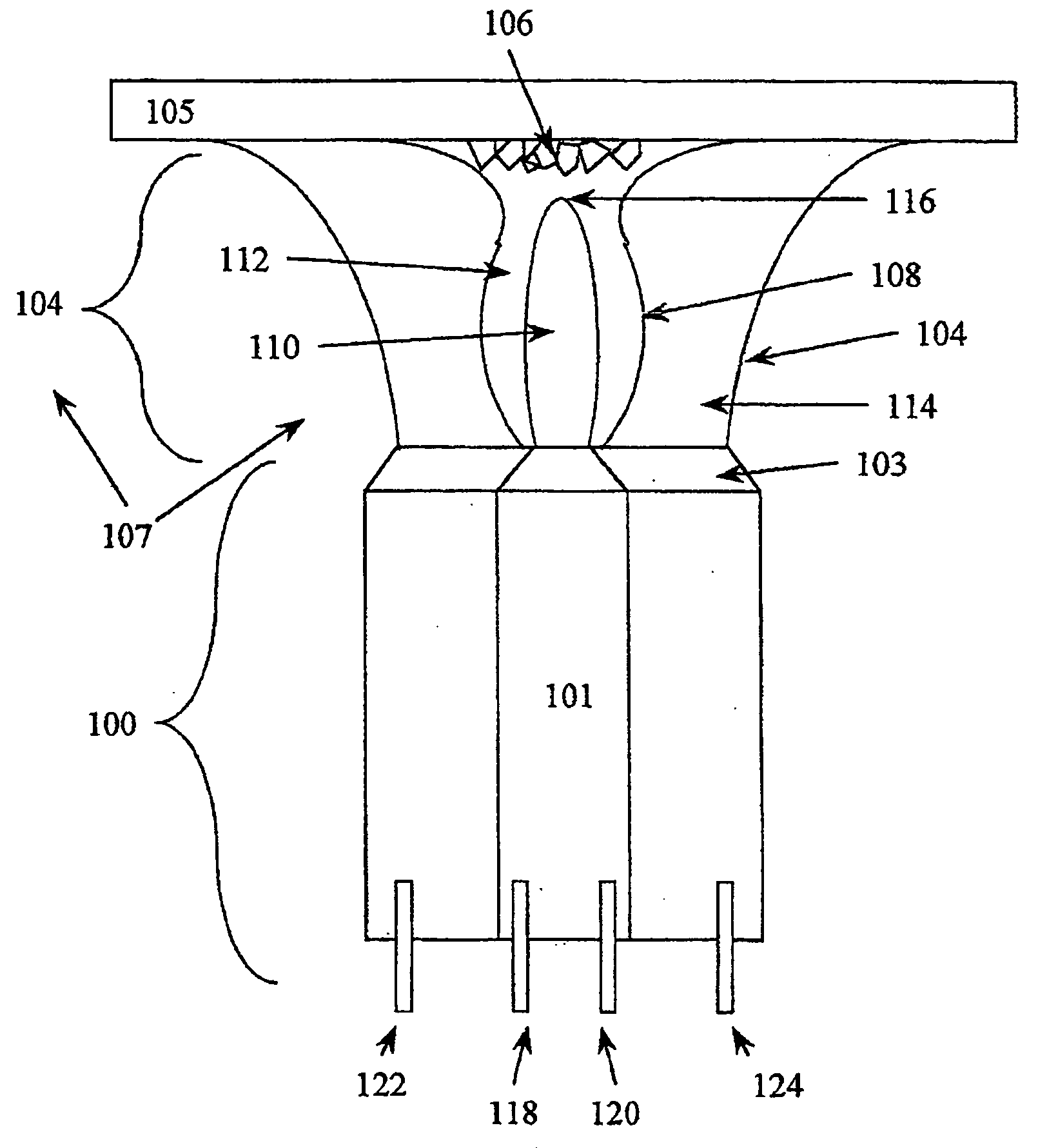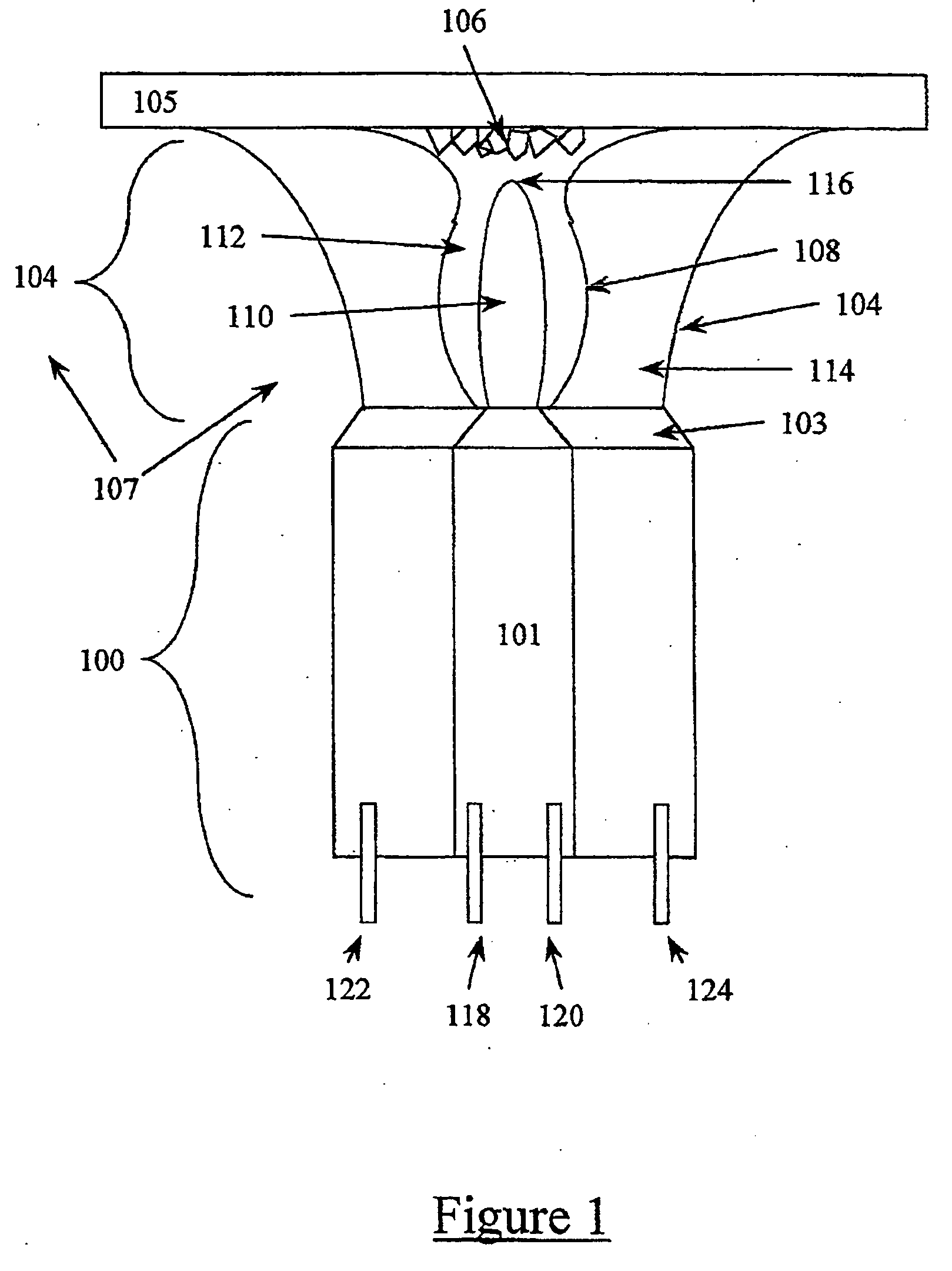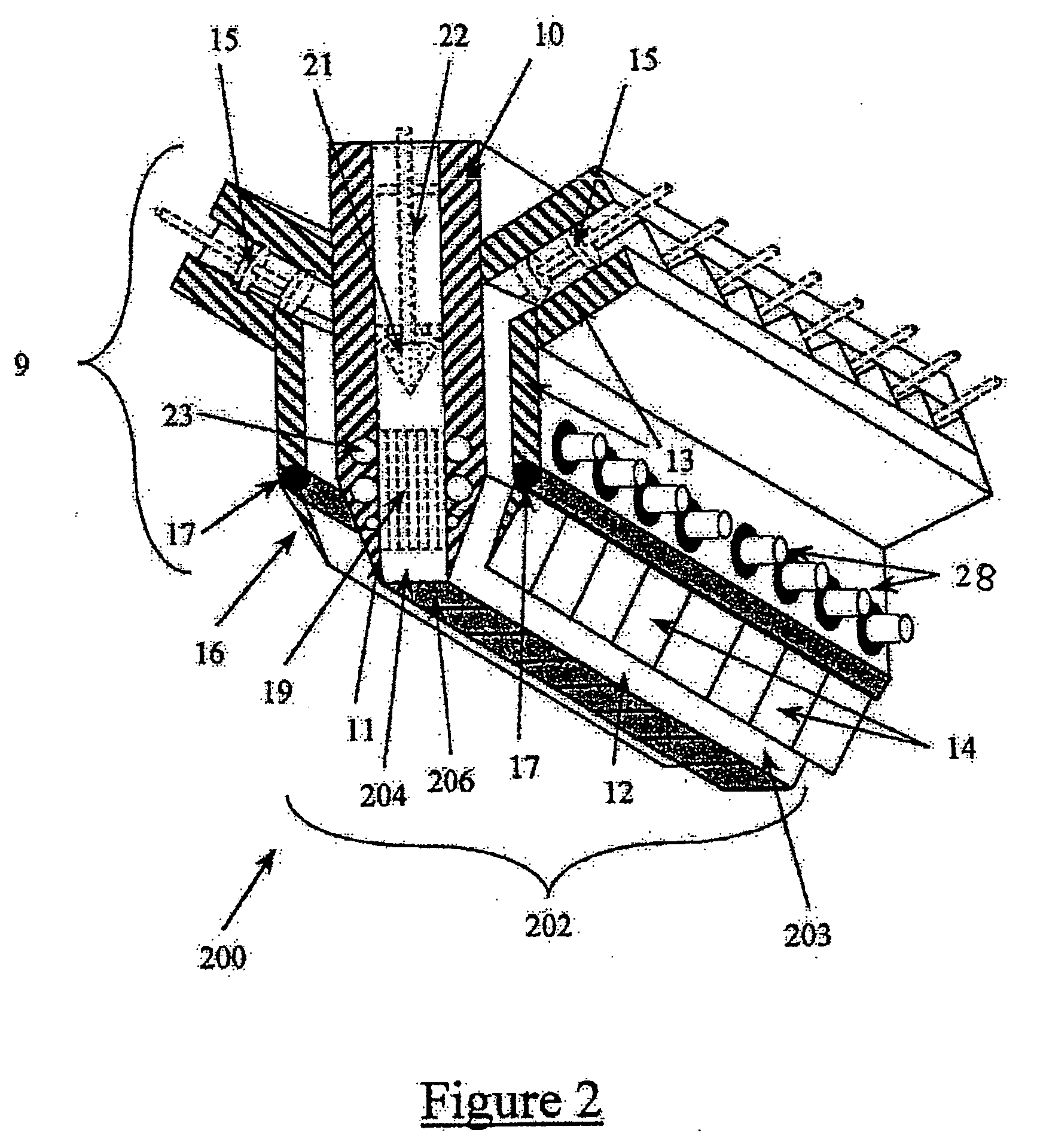Process and apparatus for preparing a diamond substance
a diamond and process technology, applied in the field of composite diamonds, can solve the problems of poor quality at the periphery, inhomogeneous product formation, and substantially good quality
- Summary
- Abstract
- Description
- Claims
- Application Information
AI Technical Summary
Benefits of technology
Problems solved by technology
Method used
Image
Examples
example 1
[0217] A diamond deposition system was built using the following equipment and methods: A set of two Uniweld Products “All Trades II” V style Oxyacetylene outfits were employed, each of which consisted of a pair of hoses, an oxygen regulator, an acetylene regulator, a torch handle with internal gas mixing, and a set of welding tips ranging in size from 0 to 10; also utilized were four Aera FC-980 mass flow controllers, four DP 455C digital panel meters, four 3610C control potentiometers, and an Aera AS-60A water vapor delivery system, a copper block 6″×6″×1″ with an internal channel and a threaded input and output fitting for water-cooling, an Omega products SAT-12 platinum-rhodium 30 AWG thermocouple (ANSI type S) with an Al2O3 ceramic protection tube, a Keithley Instruments Model 2182 Nanovoltmeter, and a Keithley Instruments Model 248 High voltage power supply.
[0218] The Uniweld torch handle / mixer was attached to a tabletop clamp arm so that the welding tip was positioned above ...
example 2
[0221] In accordance with the procedure described for Example 1, another experiment was performed using substantially the same conditions as Example 1 with the following conditions: (a) two welding tips from the Uniweld Products “All Trades II” V style Oxyacetylene torch set were connected to the original welding tip with a set of clamps, (b) these tips were placed parallel to the original, but on opposite sides so that they were 180 degrees apart with the original tip in the center, (c) the ends of the tip were recessed 1 mm from the end of the original tip, (d) the tips were size #6 with an opening diameter of approximately 2 millimeters, (e) the input sides of the tips were connected using brass tubing to two sides of a Y-connector, and the remaining end of the Y-connector was connected to the output port of a Uniweld Products torch handle with internal gas mixing, (f) one of the input ports of the torch handle / mixer was connected directly via a hose and adapter to an Aera FC-980...
example 3
[0226] Another experiment was performed using substantially the same conditions those described in Example 1 with the following differences:
[0227] Three aluminum silicate ceramic pipes 3 inches long and ½ inch in diameter were obtained. The ends of these pipes were machined with a standard sized threading. The ends of these pipes were then fitted with stainless steel adapters and threads were sealed with an epoxy compound. These pipes were then connected between the welding torch tips and the torch handle / mixer. These pipes served to electrically insulate the torch tips from the remaining equipment and ground. The tabletop clamp arm was then readjusted so the position of the torch tip was the same as that described in Example 1.
[0228] A Keithley Instruments Model 248 High voltage power supply was connected between the tip and the substrate. The positive terminal was connected to the torch tip by clamping a copper wire with the sheath removed from the last 8″ to the input side of t...
PUM
| Property | Measurement | Unit |
|---|---|---|
| Fraction | aaaaa | aaaaa |
| Angle | aaaaa | aaaaa |
| Percent by volume | aaaaa | aaaaa |
Abstract
Description
Claims
Application Information
 Login to View More
Login to View More - R&D
- Intellectual Property
- Life Sciences
- Materials
- Tech Scout
- Unparalleled Data Quality
- Higher Quality Content
- 60% Fewer Hallucinations
Browse by: Latest US Patents, China's latest patents, Technical Efficacy Thesaurus, Application Domain, Technology Topic, Popular Technical Reports.
© 2025 PatSnap. All rights reserved.Legal|Privacy policy|Modern Slavery Act Transparency Statement|Sitemap|About US| Contact US: help@patsnap.com



